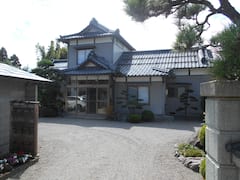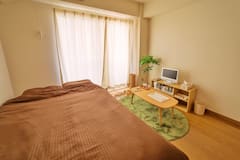The doors to the shinkansen close, and the serenity has already begun. As you look out the window, Tokyo seems like it must still be abuzz with the excitement we all love and expect, but you’re already on your way to Nagano and Niigata prefectures for an escape of an entirely different design. Here in the mountains, and down to the other sea, a fantastic tapestry of Japan’s natural boastables awaits. Four nights gives you a comfortable look into some of the region’s best offerings.
Some may know about Nagano from when the prefecture hosted the Winter Olympics back in 1998, and to be sure the prefecture still profits from the infrastructure investments made around that time, but there is also a wide world of adventure and cultural immersion for the taking when you roam about this lightly treaded gem of an area. Neighboring Niigata produces some of the world’s finest sakes, but also begs to be enjoyed for its unique coastal and island natural assets.
Day 1: Travelling from Tokyo to Echigoyuzawa, Niigata

A trip out of the madness and into the soothing hot waters of Echigoyuzawa Onsen can be achieved with such speed and convenience that it may almost seem unholy! From Ueno Station, it takes a mere one hour and fifteen minutes (add five minutes if you get on at Tokyo Station) to reach Echigoyuzawa Station, at which the revitalizing waters are almost lapping up against the platform. Best of all, by making use of JR EAST PASS (Nagano, Niigata area), this magical teleport can be had for a surprisingly low price. Trains leave Tokyo roughly once an hour, and once you get to Echigoyuzawa, catching a shuttle bus or even just walking will take you that last leg. Alternatively, use this train station as a launching point for deeper adventure into the mountains on a connecting local line. For a four night leisure junket, it’s recommended to spend just one night here in the Echigoyuzawa area. There are still more places to head further along the shinkansen lines, be it in Niigata or Nagano prefectures.

During your trip, you should visit a sake tasting museum. There are three branches at major train stations in Niigata; Echigoyuzawa station, Niigata station, and Nagaoka station. Conveniently located, you can visit the museum quickly after arriving or before leaving for your next destination. Photographed above is the sake tasting museum from Nagaoka station. You can learn about the different sakes (dry vs. sweet, clean aftertaste vs. lingering bouquets) and taste some of the prefecture’s best sakes (from 88 sake breweries).
Day 2 & 3: Jumping off to Sado Island, Niigata
Alas, comfortable and speedy trains only get you so far, and for the well-worthwhile trip to Sado Island, you’re going to need to take a ferry. Sado Island is an “S” shaped island located just off the coast of Niigata. The island is the largest in the sea of Japan and is famous for their Japanese rice wine.
The same train that takes you from Tokyo to Echigoyuzawa also continues on to Niigata Station in a mere 45 minutes. From there, it’s a short bus ride to the ferry port for the 65-minute jetfoil boat ride to Ryotsu Port on Sado Island. Even better, JR EAST PASS (Nagano, Niigata area) holders can purchase the Sado Niigata Pass that makes life more convenient and less expensive even when extending off the trains and onto the ferries. Note that there are regular ferries and high-speed ones, and there are at least a couple of classes of service (read: comfort) on each of the ships. Despite it not being a very long voyage, the ferries are well equipped with indoor and outdoor seating, snack shops, extensive restrooms, and even elevators on the larger vessels. Regardless of the configuration, wheelchair access is a given.
They say that the journey to a place is half the fun, but despite these ferries being quite nice, you should still plan on spending a couple of nights on Sado Island to more thoroughly enjoy the beauty it has in store.
You might be interested in these Airbnbs!
For a cultural experience, you can book a Taiko drum experience in Kodo village, or go on a tarai-bune (tub boat) ride which are traditionally used to collect shellfish and seaweed. History buffs should go check out the largest gold mine in Japan, Sado Kinzan Gold Mine, which has over 400 years of history. From the mountains to the sea, and even underground to the old gold mines, this relatively small island really packs an activity-rich punch!
Day 4: Spend a night in Nagano City

Once you’ve had your fill of Sado Island, a night in Nagano City is a more than worthwhile stop (Nagano is the name of the prefecture, the largest city within the prefecture, and the main train station within that prefecture). One attraction you cannot miss is the Zenkoji Temple. This is a historic and important temple was founded in the seventh century, and houses the first ever Buddha statue (it is safely stored, while a replica is displayed to the public once every six years).

Togakushi Shrine is located on the base of Mount Togakushi (one of Japan’s sacred peaks) in Nagano and consists of a lower, middle and upper shrine area. There are five shrines in total and walking between those shrines is a traditional pilgrimage route (around 2 km long). The shrines are dedicated to the gods in a legend of the sun goddess. Legend has it that the sun goddess hid herself in a cave, closed herself in with a boulder, and the world fell into darkness. When the other gods tried to lure her out with a dance performance, she pushed the boulder open to take a peak. It was then when one of the gods threw the boulder so she could never hide again. The boulder door is said to have landed in Togakushi which means “hiding door”.
Nagano’s sights are a pleasure to behold, but the word is out, and you may find yourself in the midst of many others looking for that same experience in this city.
Getting around Niigata and Nagano is comfortable and a breeze
Sometimes travel is about racing around to see things, and sometimes it is about just bringing yourself to a halt to allow experiences to flow to you. The great thing about Nagano and Niigata is that you can play it both ways as you please, and without compromise. Still, some visitors find themselves a bit out of their comfort zone when it comes to travel outside the Tokyo-Kyoto-Hiroshima shinkansen line, but there’s really no need for it to be that way. With frequent and comfortable access to Niigata and Nagano from Tokyo, there’s a whole other world to be explored - and it doesn’t even take as long to get to these regions as it does to get to Kyoto. So book your rail pass and start planning your trip, you won’t regret it.
Travel Tips
Use the JR EAST PASS (Nagano, Niigata area) to travel around Nagano and Niigata to save costs on transportation. It’s cheaper to purchase your tickets overseas (before your trip to Japan). Purchases can be made either online or through a travel agent.
If you intend on visiting Sado Island and have a JR EAST PASS (Nagano, Niigata area), purchase the Sado Niigata Pass for the Sado Ferry and frequent bus services. Not only will you get a discounted price, you will also save time.
For a unique experience, be sure to catch the Genbi Shinkansen (also known as the Joyful Trains). You can find displays of modern art on board and tastefully designed cars. The train runs between Echigoyuzawa and Niigata station.
This article is sponsored by Ministry of Land, Infrastructure, Transport and Tourism Hokuriku-Shin'etsu District Transport Bureau, East Japan Railway Company, Sado Tourism Association, Niigata Pref. Intl. Tourism Theme District Promotion Council, & Nagano Tourism Organization.
History
Get Trip101 in your inbox
Unsubscribe in one click. See our Privacy Policy for more information on how we use your data























Create an account to